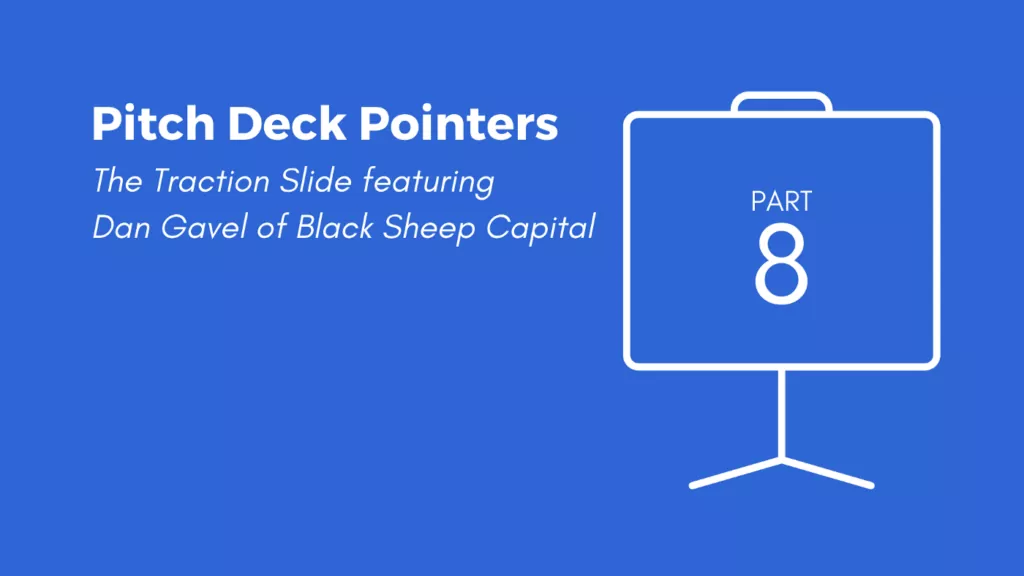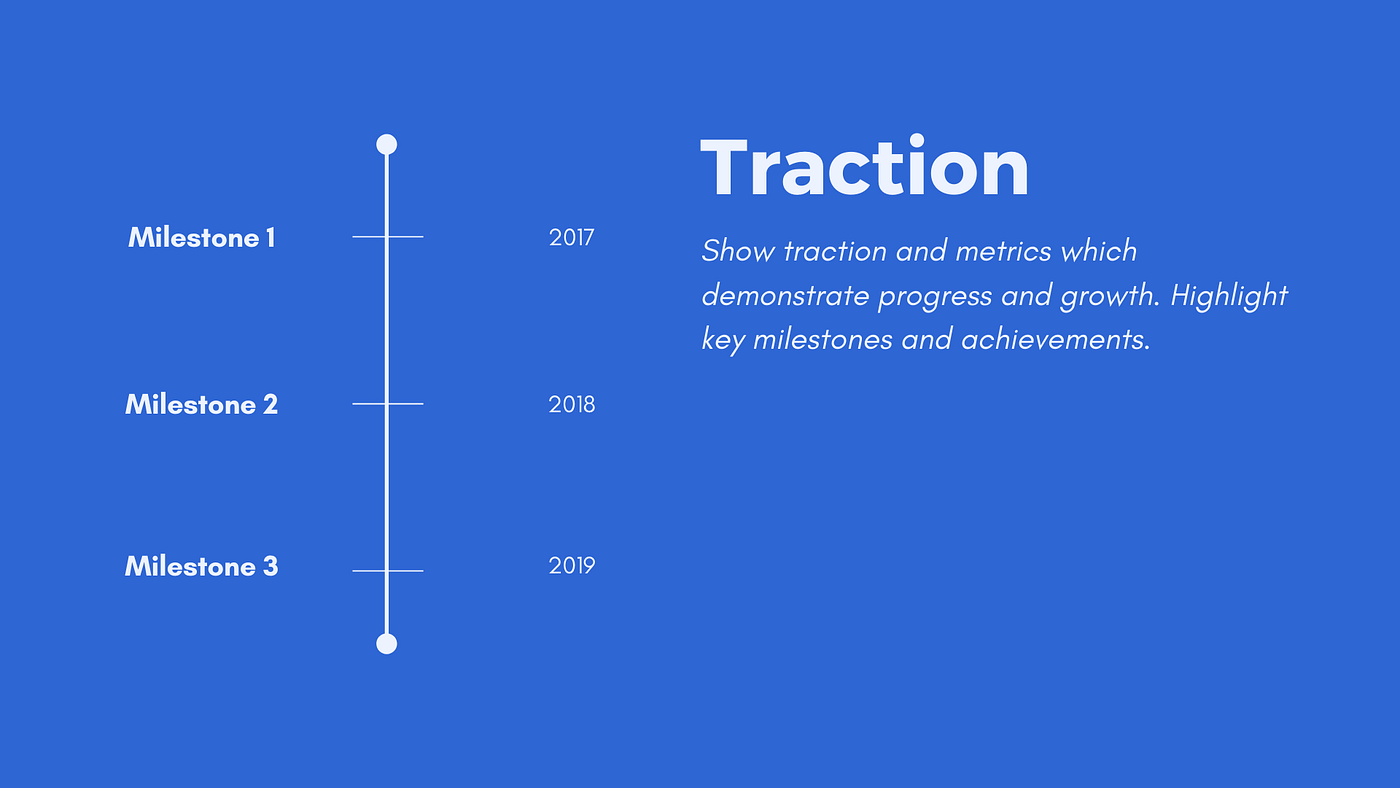Pitch Deck Pointers Part 8: The Traction Slide
Dan Gavel, Director at Black Sheep Capital, is stepping in to share what investors want to see on the traction slide in a startup founder’s pitch deck.

At Innovation Bay, we’ve seen thousands of pitch decks. We’ve hosted hundreds of pitch events and always work with founders to hone their deck before presenting to investors. These experiences sparked the creation of the Pitch Deck Pointers series. We wanted to reach founders outside of our events and help them perfect their pitches. Some top Aussie VCs have stepped in to lend a hand and share what they look for in a pitch deck, slide by slide. So far we’ve released:
- The Intro Slide featuring Sian Priest of Innovation Bay
- The Problem Slide featuring Emily Close of AirTree Ventures
- The Solution Slide featuring Hannah Field of Tempus Partners
- The Market Slide featuring Alon Greenspan of Jelix Ventures
- The Unfair Advantage Slide featuring Benjamin Chong of Right Click Capital
- The Competition Slide featuring Hugh Bickerstaff of Investible
- The Business Plan Slide featuring Kylie Frazer of Eleanor Venture
Today, Dan Gavel, Director at Black Sheep Capital, is sharing his advice on how to craft the ideal traction slide.
Meet the VC: Dan Gavel of Black Sheep Capital

I’m Dan Gavel, Director at Black Sheep Capital. At Black Sheep Capital, we’re working towards creating the most helpful super angel offering for early-stage companies in Australia. There is no startup too early. We love working with early-stage founders to help them accelerate and support the journey from concept to market-leading company.
The Traction Slide

The purpose of the traction slide and why it’s important to an investor
The purpose of the traction slide (as well as its content) varies considerably depending on the stage of your business. Focusing on Pre Seed and Seed, we see this slide as an opportunity to demonstrate your progress toward validation and as a way of building confidence in the opportunity’s potential for success. –DG
Common mistakes made on the traction slide
- Content without context: Adding context can give meaning to content.
2. Not telling a narrative with what you present.
3. Too much focus on financial and customer traction while forgetting other achievements for the business — partnerships, licenses etc.
4. Going over the top. Be comprehensive but don’t be excessive. We often see founders putting so much information into the slide that it is hard to digest. –DG
Top tip for founders
Keep it simple, make it clear. Focus on being succinct and to the point in conveying the success and achievements of the business to date. Spend the time to understand and be selective about the information you put on this slide and be sure you consider the intended audience. You want enough to be a hook but don’t overdo it. We will follow up to dive deeper into the details. –DG
Next up:
- Part 9. The Team Slide featuring Tip Piumsomboon of Blackbird Ventures
- Part 10. The Ask Slide featuring Georgina Turner of Tidal Ventures
Our latest podcast episodes on Open the Pod Bay Doors are focused on fundraising so give those a listen for more information.
Disclaimer: At the end of the day, this series is just a guide and should not be taken as gospel. Just as every business is different, every slide deck should be different. While the general order and number of slides we’ll use in the series is a good jumping-off point, perhaps a few more or fewer slides or a completely different sequence would better fit your company’s story.